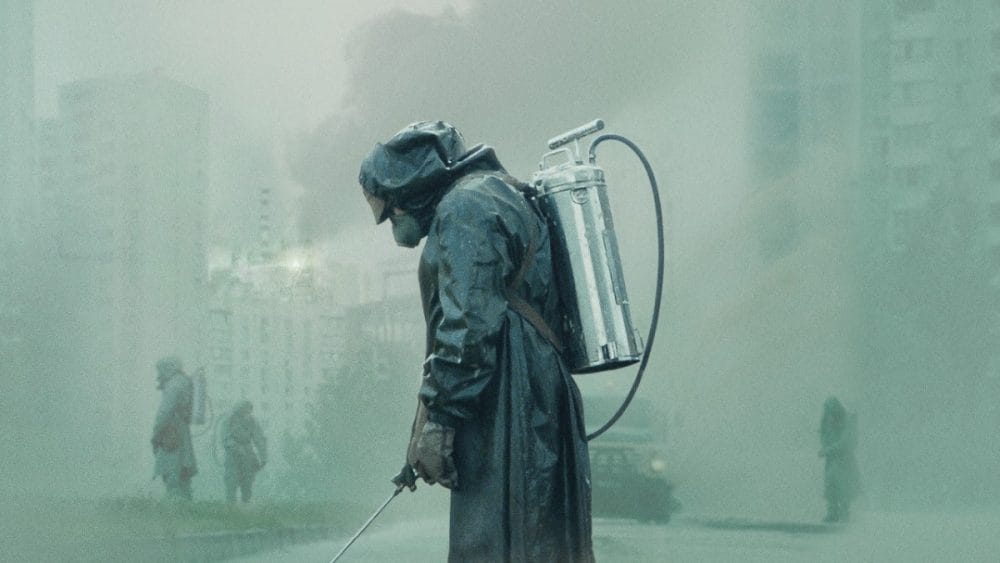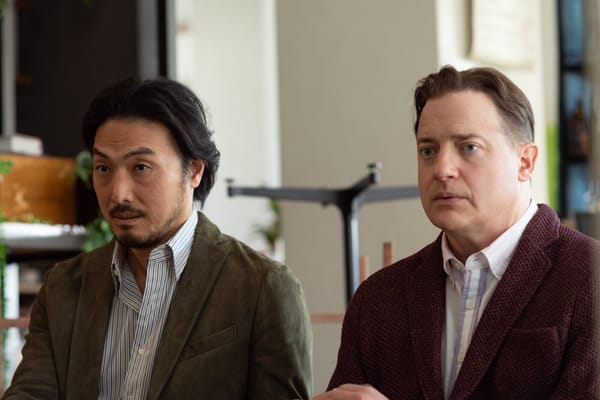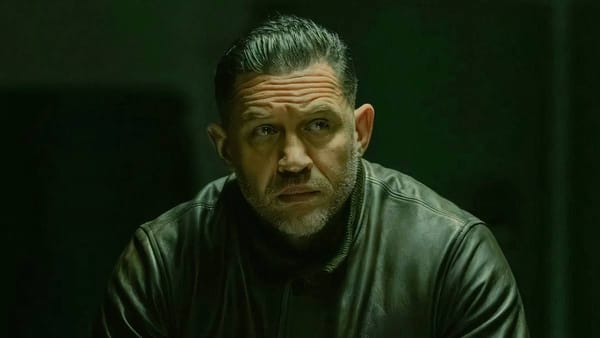The cost of truth.

As a Canadian-born Romanian, raised on the stories of what my parents and grandparents survived under Communism, CHERNOBYL doesn’t play to me like a disaster miniseries. It plays like memory. Not my memory — but the kind that shaped every Romanian kitchen table story I grew up listening to. The silence, the paranoia, the ration cards, the controlled information, the sudden disappearances, the blame-shifting, the “everything is fine” announcements when everything is on fire.
CHERNOBYL gets the psychology of the Eastern Bloc right in a way very few Western productions ever have. It’s not just about a reactor exploding. It’s about a system collapsing under the weight of its own lies.
What the series understands — and what anyone with roots in the former USSR or Eastern Europe understands instinctively — is that the explosion was inevitable long before April 1986. When you build a political system on secrecy, humiliation, threats, and bureaucratic fear, you don’t need a nuclear reactor to meltdown. People do it first.
The brilliance of the series is how it captures this as quietly as it does graphically. Yes, the physical horror is unforgettable — the graphite shards, the skin sloughing off, the men dying in slow motion. But the emotional horror is worse. It’s the meetings behind closed doors, where truth is dismissed as “panic,” and where officials treat physics like an enemy ideology.
The scene where local authorities insist there was no explosion — while standing in front of evidence so overwhelming it’s almost laughable — feels like it could have come from any Communist-era Romanian factory, hospital, school, or ministry. My family has stories of inspectors covering broken equipment with sheets, of party bosses rewriting reports, of people fired or arrested for pointing out reality. CHERNOBYL’s tragedy was not a malfunction. It was a culture.
A culture where: telling the truth gets you punished, lying keeps you alive, obedience ranks above competence, the Party’s image outweighs human life, and denial becomes its own ideology. The show nails this with frightening precision.
Valery Legasov, the scientist trapped in an impossible position, becomes the emotional key. His exhaustion — the kind that sits in the bones — is something I’ve heard in my parents’ voices when they talk about the Ceaușescu years. It’s not just tiredness. It’s the fatigue of constantly navigating a system designed to break you in small ways every day.
Ulana Khomyuk, though fictionalized, represents the thousands of Eastern European scientists who knew exactly what their governments were capable of but had no safe avenue to speak. Her presence is a reminder that the truth almost never survives because of systems — it survives because of stubborn, terrified individuals who decide they’d rather risk punishment than let the lie win.
What hits hardest is how CHERNOBYL shows the violence of bureaucracy. The plant workers who weren’t told the truth. The firefighters sent in with no protection. The conscripts forced to shoot dogs in the exclusion zone. The miners sweating through the tunnels because someone higher up refused to accept the scale of disaster.
This isn’t Hollywood villainy. It’s the banality of authoritarianism. It’s the shrug. The stamp. The signature. The decision made to avoid embarrassment. The insistence that “it isn’t that bad” as the radiation burns through the soil.
As a Romanian, I recognize the language. I recognize the tone. I recognize the cruelty masked as efficiency.
Most importantly, I recognize the courage of ordinary people who stepped forward anyway. The plant operators who stayed. The soldiers who dug. The divers who walked into radioactive water knowing exactly what it meant. Their bravery isn’t the shiny, triumphant kind Western media loves — it’s the grim, practical courage born from living in a world where tragedy is guaranteed and hope is a rare luxury.
What makes CHERNOBYL so devastating — and so necessary — is that it refuses to frame the disaster as an accident of history. It presents it as the logical endpoint of a system that punished truth and rewarded loyalty.
And an iconic line in the show — “Every lie we tell incurs a debt to the truth” — is not poetic metaphor. It is geopolitical mathematics. Romania paid that debt in blood. So did Ukraine. So did Belarus. So did everyone who lived under regimes built on paranoia and propaganda.
CHERNOBYL is not just a retelling of a nuclear disaster. It is an autopsy of an ideology. A study of how states collapse from the inside. A testimony to how human beings, even when crushed, still sometimes choose integrity over survival. And for anyone with roots in the former Eastern Bloc, it doesn’t feel like history. It feels like a warning.
A memory. A voice we thought was buried, saying: “I’m still here.”




